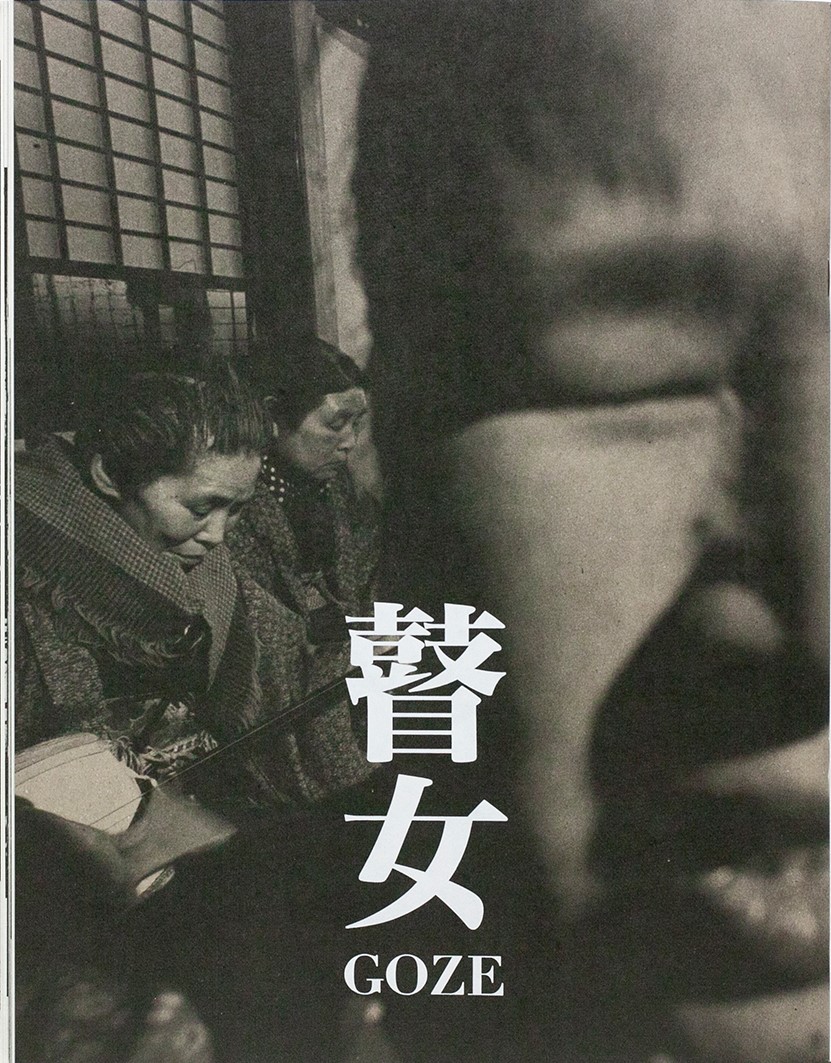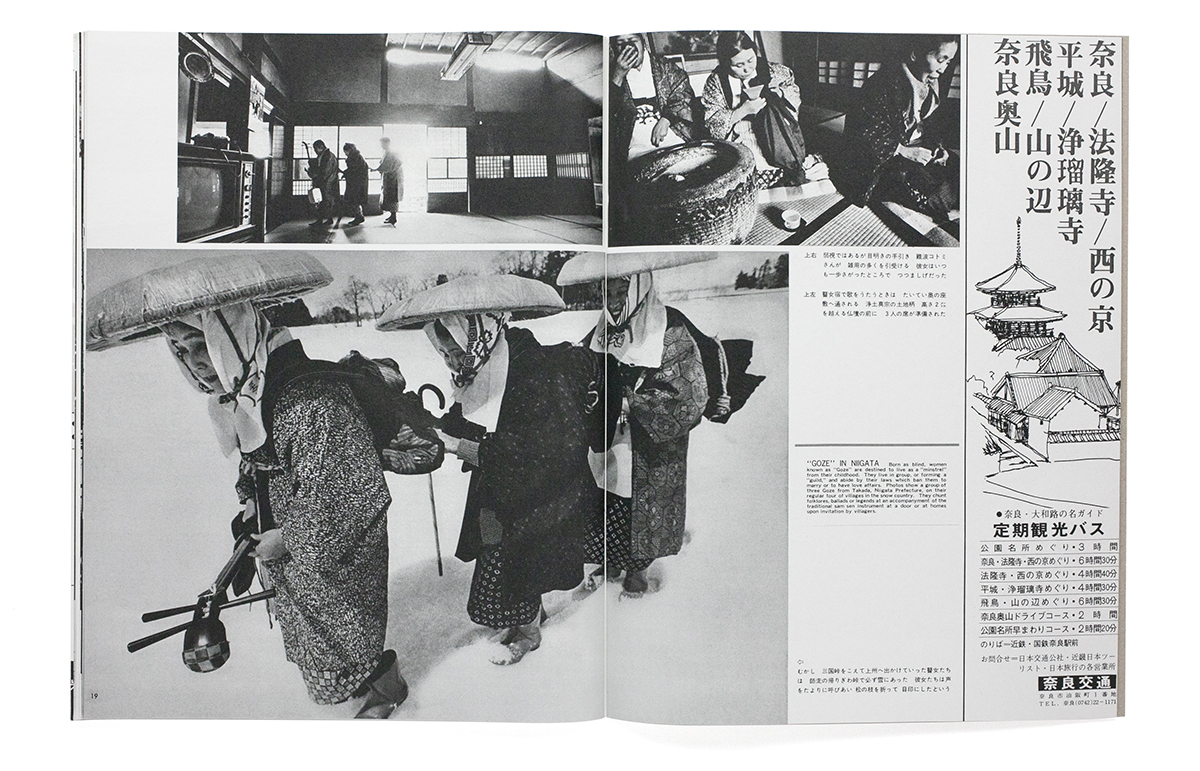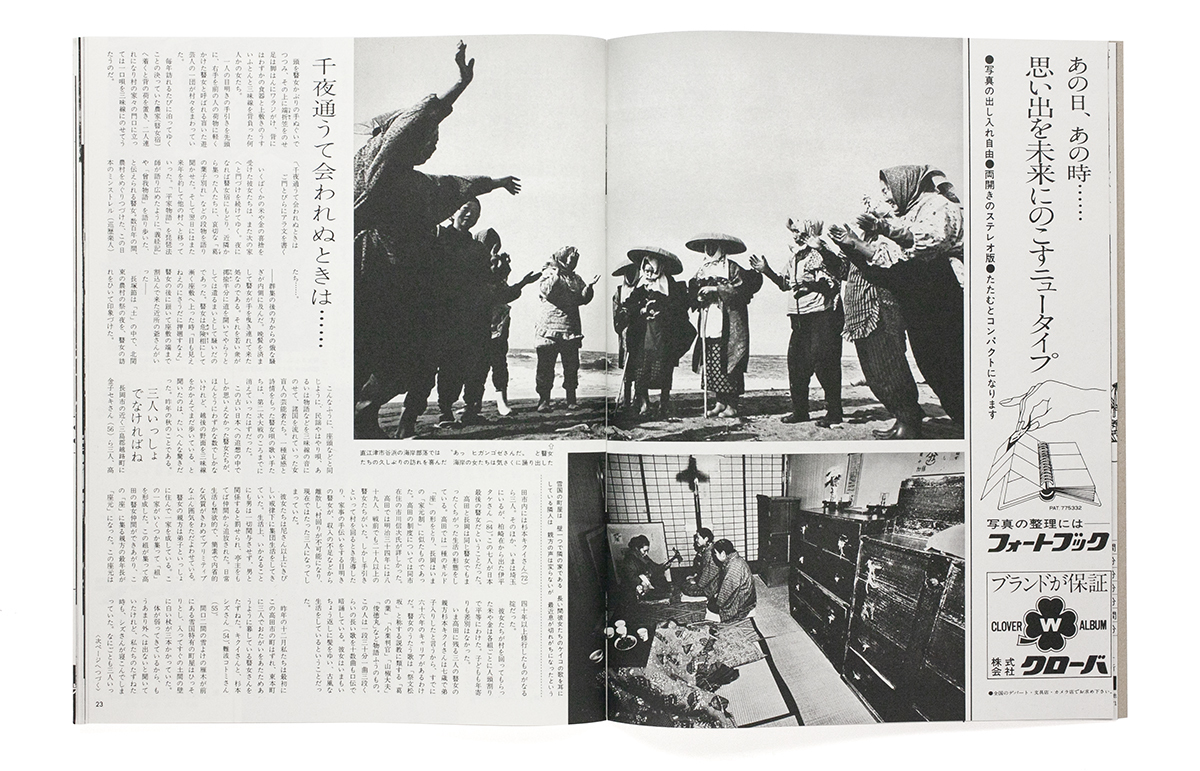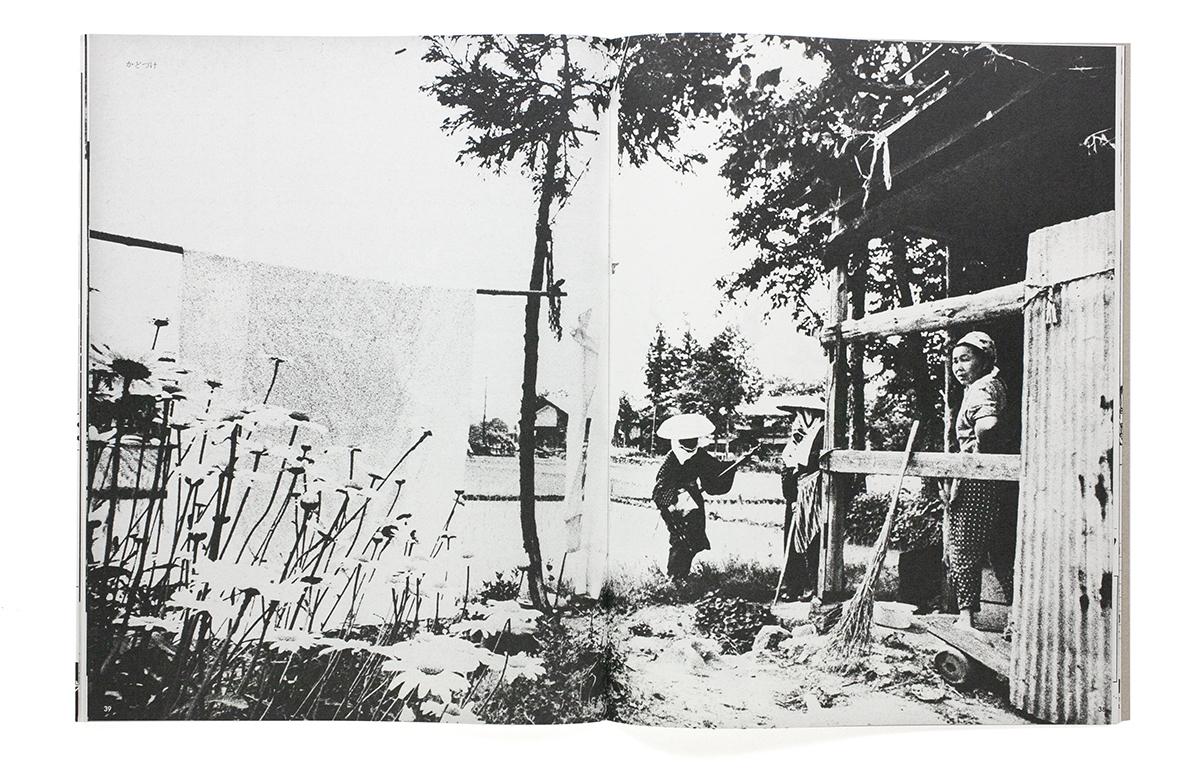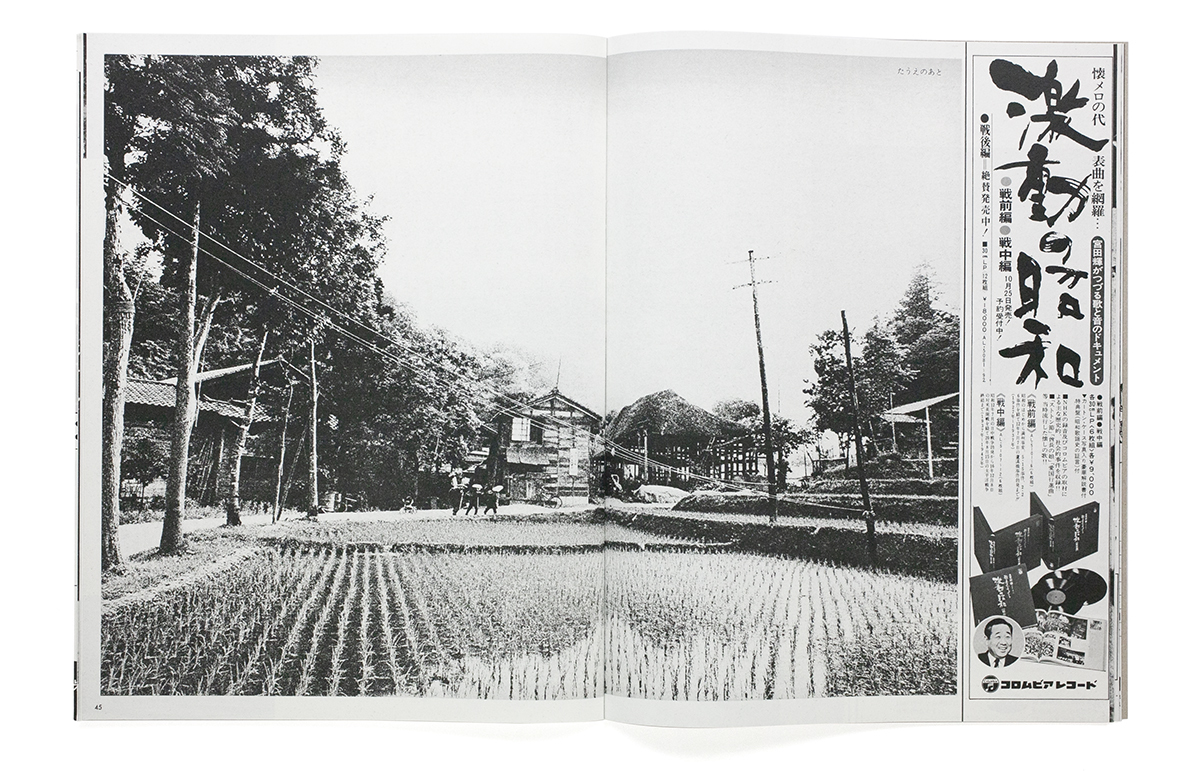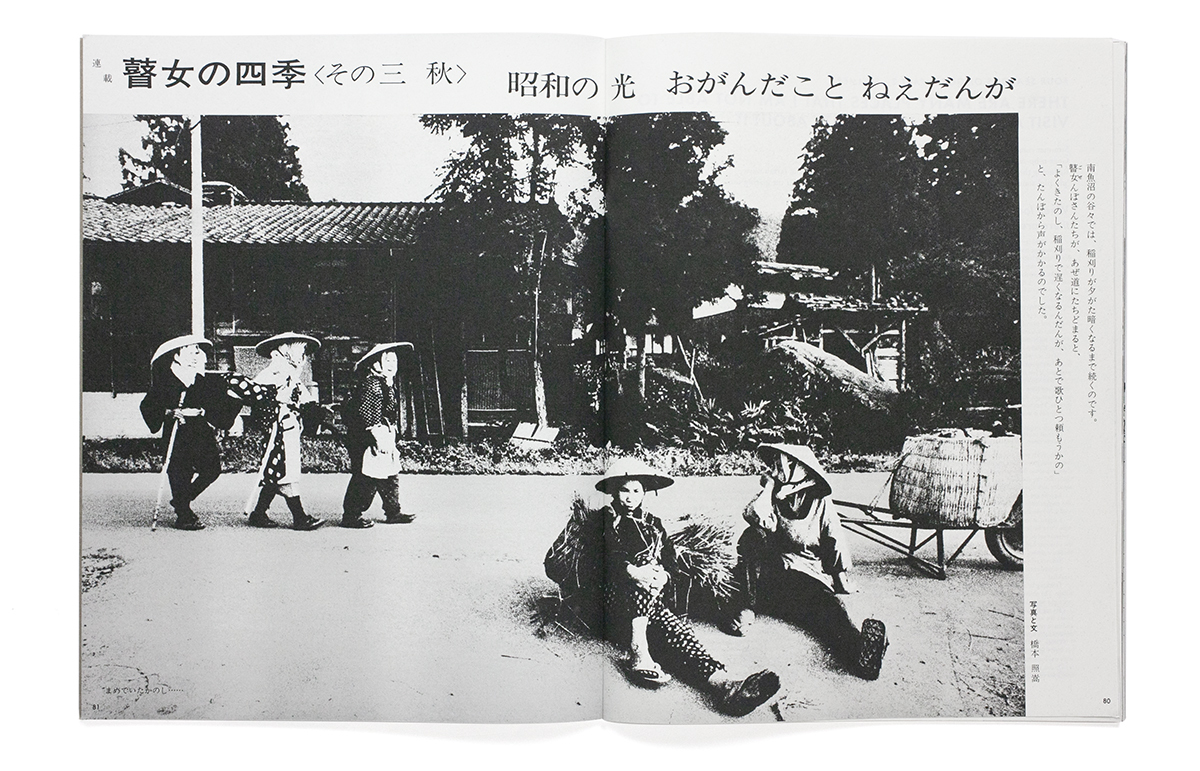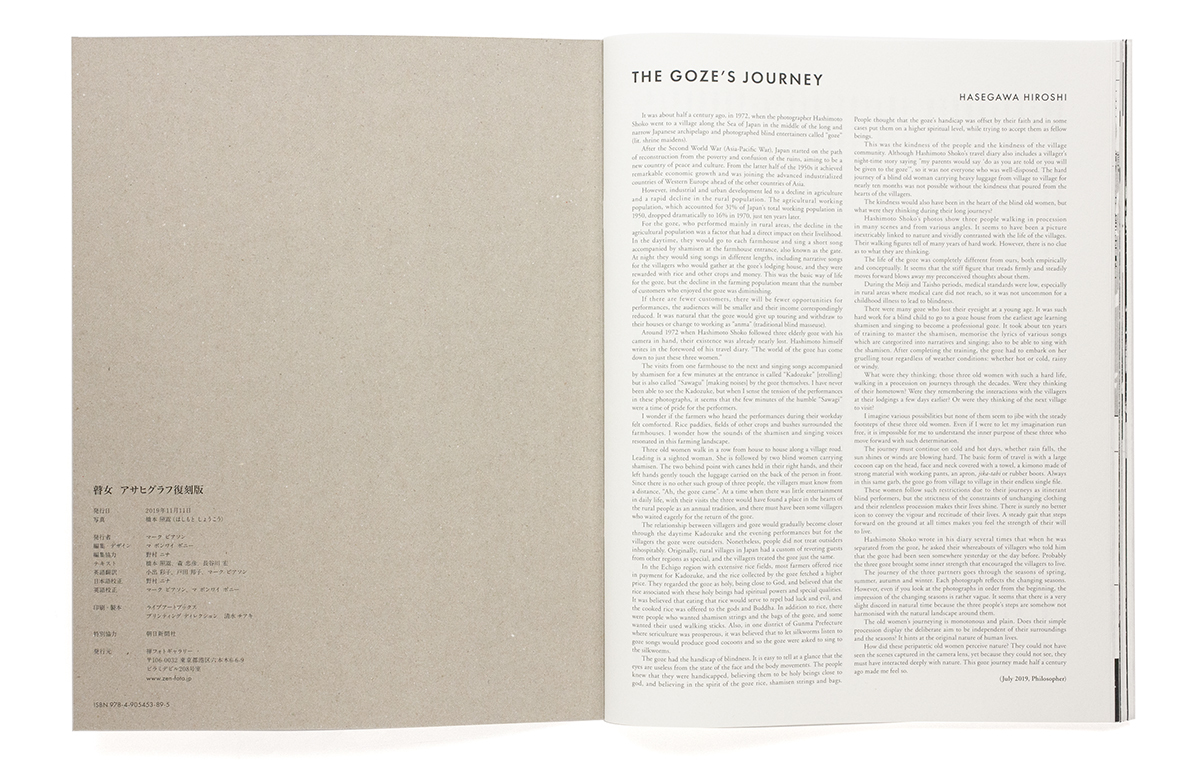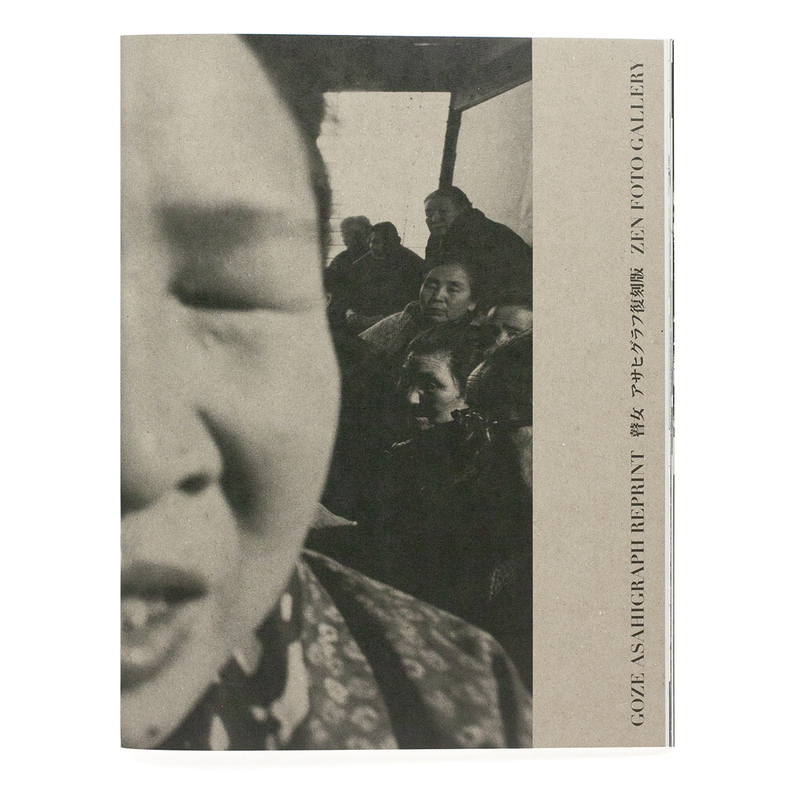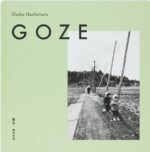VENDU / SOLD OUT
1ère édition tirée à 700 exemplaires.
Exemplaire Signé.
Il y a un demi-siècle, Hashimoto Shoko a photographié des musiciennes aveugles appelées goze qui ont tourné et joué dans les zones rurales le long de la mer du Japon. [Note : En japonais, le goze se prononce « rosé »]
Le goze visitait les fermes et chantait une courte chanson accompagnée au shamisen au début de la journée. La nuit, elles chantaient des chansons de différentes longueurs, y compris des chansons narratives pour les villageois qui se rassemblaient, et elles étaient récompensées avec du riz ou d’autres cultures et de l’argent.
Quand Hashimoto a suivi trois groupes de goze avec son appareil photo au début des années 1970 à travers les saisons de printemps, d’été, d’automne et d’hiver, leur existence était déjà presque perdue – le développement industriel et urbain au Japon à l’époque a entraîné un déclin de l’agriculture et de la population rurale, ce qui a eu une incidence directe sur leurs moyens de subsistance.
Cette publication est une réimpression de tous les articles sur le goze photographié par Hashimoto, qui ont été initialement publiés dans Asahi Graph, un hebdomadaire photo japonais qui a continué de 1923 à 2000. Les articles inclus sont les suivants : « Goze, Sightless Female Singers » du 8 mai 1970; série « Four Seasons of Goze » du 26 octobre, 2 novembre, 9 novembre et 16 novembre 1973.
Half a century ago, Hashimoto Shoko photographed blind female musicians called the goze who toured and performed in the rural areas along the Sea of Japan. [Note: In Japanese, goze is pronounced as in “rosé”]
The goze would visit farmhouses and sing a short song accompanied by shamisen at the entrances in the day time. At night, they would sing songs in different lengths, including narrative songs for the villagers who would gather, and they were rewarded with rice and other crops and money.
When Hashimoto followed three elderly goze with his camera in the early 1970s through the seasons of spring, summer, autumn and winter, their existence was already nearly lost – the industrial and urban development in Japan at that time led to a decline in agriculture and rural population, directly impacting their livelihood.
This publication is a reprint of all the articles on the goze photographed by Hashimoto, which were originally published in Asahi Graph, a Japanese weekly pictorial magazine that continued from 1923 to 2000. Articles included are: “Goze, Sightless Female Singers” from May 8, 1970; “Four Seasons of Goze” series from October 26, November 2, November 9 and November 16, 1973.
This reprint includes English translations for all the articles and an additional essay written by Hasegawa Hiroshi.
“The journey must continue on cold and hot days, whether rain falls, the sun shines or winds are blowing hard. The basic form of travel is with a large cocoon cap on the head, face and neck covered with a towel, a kimono made of strong material with working pants, an apron, jika-tabi or rubber boots. Always in this same garb, the goze go from village to village in their endless single file.
These women follow such restrictions due to their journeys as itinerant blind performers, but the strictness of the constraints of unchanging clothing and their relentless procession makes their lives shine. There is surely no better icon to convey the vigour and rectitude of their lives. A steady gait that steps forward on the ground at all times makes you feel the strength of their will to live.” -Excerpts from “The Goze’s Journey” by Hasegawa Hiroshi

